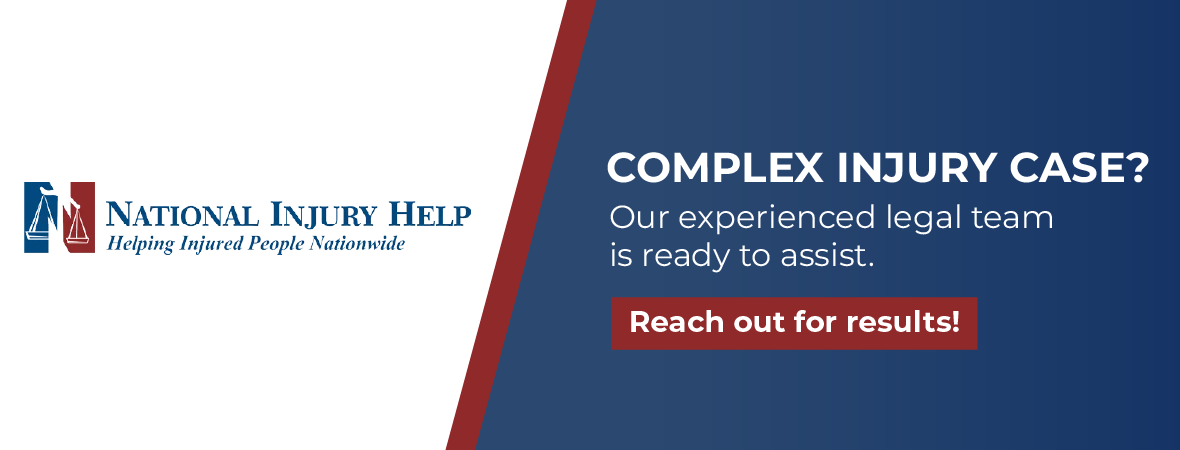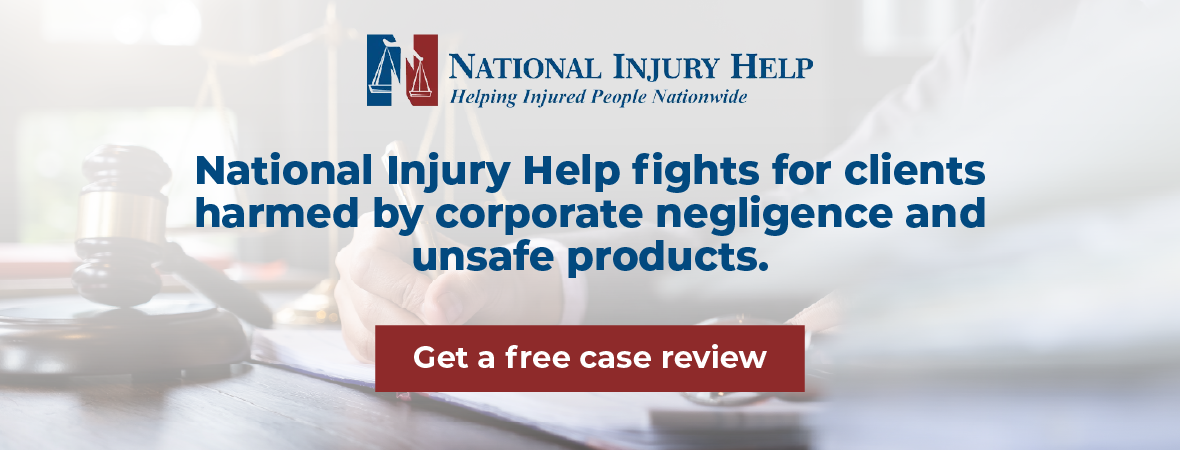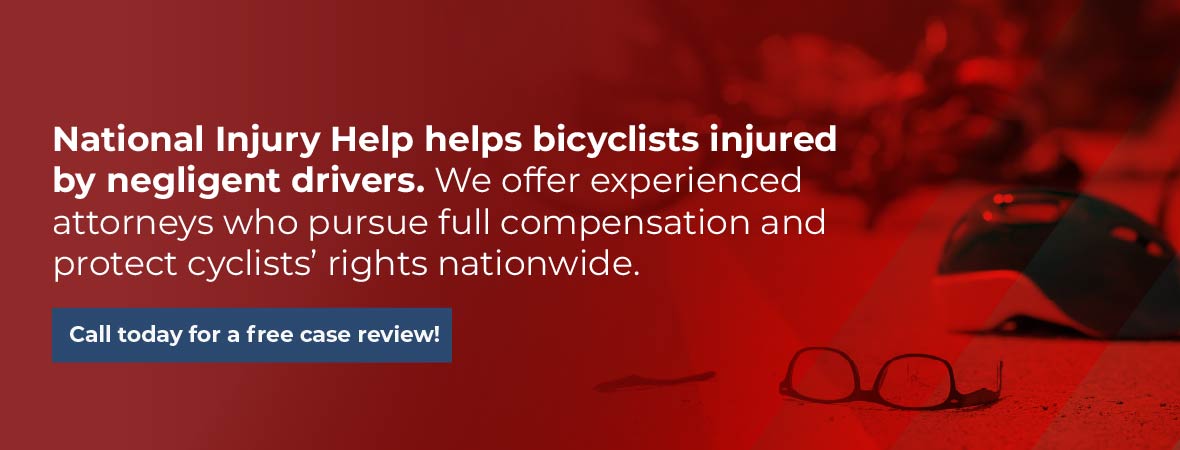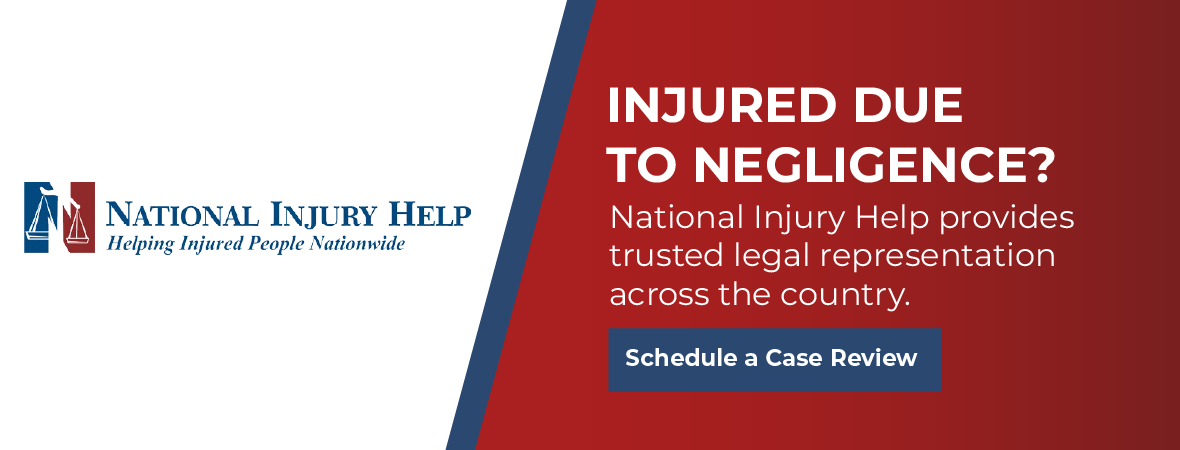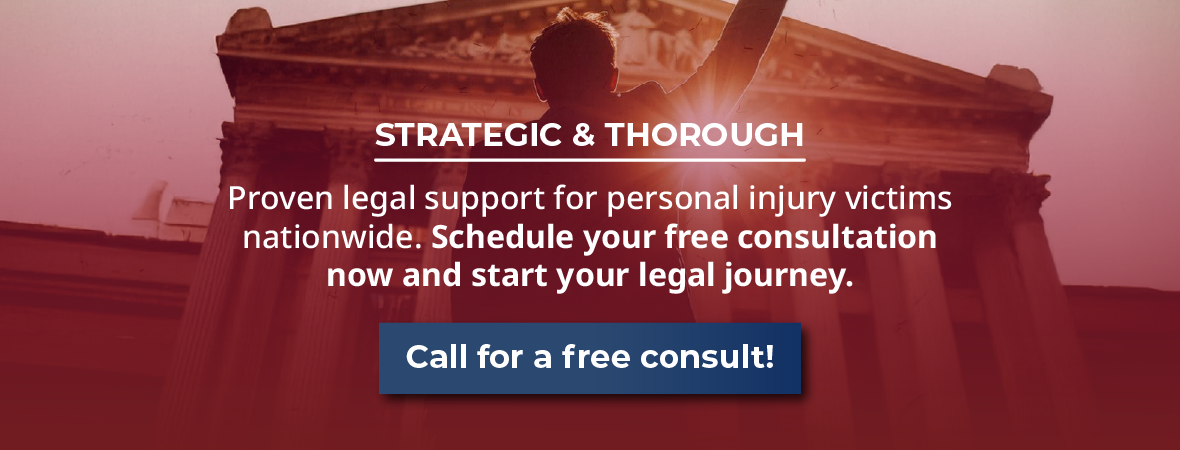Getting hit while riding a bike can leave you with serious injuries and a lot of unanswered questions. This article explains how a bicycle accident lawyer can help you recover damages and deal with insurance companies. Contact National Injury Help today by calling 1-800-214-1010. We are here to protect your rights and fight for the compensation you deserve.
Getting hit while riding a bicycle is one of the most jarring and painful experiences a person can face. Unlike drivers, cyclists are not protected by airbags or reinforced steel frames. A split-second collision can leave you with broken bones, brain injuries, or lasting emotional scars. At the same time, you are often left to battle insurance companies alone, with confusing policies, denied claims, and shifting blame.
If you were hurt in a crash, hiring a skilled bicycle accident lawyer can make all the difference. At National Injury Help, we fight to protect cyclists across the United States. On this page, we explain how bike crash claims work, what to do immediately after a collision, and how a bike injury attorney builds a strong case to recover the maximum compensation you deserve.
Bicycle Laws Vary by State
While it would be ideal if bike laws were consistent everywhere, they are not. Each state, and sometimes each city or county, may set different rules for how cyclists are expected to behave and where they are allowed to ride. These are some of the most important legal points every cyclist should understand.
Helmet Requirements
Helmet laws differ from state to state. Some states require all cyclists, regardless of age, to wear helmets. Others only require them for minors, typically under the age of 16 or 18. Even in areas where helmets are not mandatory, wearing one is still a smart choice. Studies consistently show that helmets greatly reduce the risk of serious head injuries.
If you are involved in an accident and were not wearing a helmet in a state where it’s required, that fact could affect your ability to collect compensation. Even if there is no helmet law, insurance companies may argue that your injuries were worse because you did not wear one. While it doesn’t automatically mean you lose your case, it may be used to reduce your settlement.
Where You Can Ride
Some cities allow cyclists to ride on sidewalks, while others ban it, especially in business districts with high foot traffic. Riding on sidewalks may seem safer, but it can be dangerous for pedestrians and can lead to confusion at intersections where drivers are not expecting bikes to enter from crosswalks.
Local ordinances often make the rules clearer. For example, one city may let you ride on the sidewalk as long as you yield to pedestrians, while another may issue a ticket for doing so in commercial areas. Always check your local laws before assuming what’s allowed.
Position in the Lane
Cyclists are generally expected to ride as far to the right as is safe, but there are exceptions. On narrow roads or streets without a bike lane, riders may legally take the full lane if that’s the safest option. This is often called “taking the lane.” It allows cyclists to avoid being squeezed into gutters, dodging potholes, or riding too close to parked cars where doors could swing open unexpectedly.
Riding two abreast, or side by side, is legal in most states as long as it does not block traffic. On roads with low speed limits or wide shoulders, this is usually not a problem. However, on busy or narrow roads, it may be illegal or discouraged.
Hand Signals
Using hand signals is not just polite; it’s often a legal requirement. These signals help drivers understand what cyclists intend to do and can prevent collisions. The standard hand signals are:
- Left arm extended straight out for a left turn.
- Left arm bent upward at the elbow for a right turn.
- Left arm bent downward to indicate slowing or stopping.
Some states also allow cyclists to use their right arm extended for a right turn, which may feel more natural for many riders. Either way, signaling is expected before you change direction or stop.
Why These Laws Matter in Legal Claims
When a bicycle accident happens, the legal outcome often depends on whether the cyclist and the driver followed the rules. If a cyclist was not wearing a helmet where required, did not signal properly, or was riding where it wasn’t allowed, insurance companies might try to shift part of the blame onto the cyclist.
However, this does not mean the driver is off the hook. But it can reduce the amount of compensation you are eligible to receive in a lawsuit or insurance claim. States follow different rules about shared fault, and a knowledgeable bicycle accident lawyer will understand how your local laws apply to your case.
Injury attorneys often use local ordinances and state statutes to show that a cyclist was following the rules, which strengthens the claim. They may also argue that a driver should have anticipated the cyclist’s presence and acted accordingly, especially in areas where bikes and cars frequently share the road.
Where and When Bike Accidents Happen Most
Knowing where accidents happen most often can help riders stay alert and prepare for higher-risk situations. Statistics from across the country show that certain locations and conditions make bike crashes more likely.
Busy Urban Streets
City roads often pack cyclists in with parked cars, buses, delivery vehicles, and ride-share drop-offs. Bike lanes, if present, may be blocked or too narrow. Drivers may swing open car doors without checking, turn across bike lanes, or pull out of driveways without noticing a cyclist. Urban areas also involve more frequent stops and starts, which increase the chances of a collision.
Suburban Commute Routes
Suburban roads tend to be wider and faster. Many cyclists ride alongside vehicles during rush hour when drivers may be distracted, tired, or frustrated. Long feeder roads, intersections without bike infrastructure, and large vehicles like trucks or buses can make these areas dangerous.
Rural Scenic Roads
While rural roads may seem peaceful, they present their own risks. Tourists who are unfamiliar with winding routes, narrow shoulders, and sharp turns may crowd cyclists or drift across lanes. In these areas, the lack of lighting and infrequent law enforcement presence can increase danger.
Complex Intersections
Accidents often happen at intersections where drivers are turning and may not notice cyclists going straight or coming from a bike lane. Multiple lanes, poor lighting, and high-speed traffic all add to the risk. If a driver does not check their blind spot or yields incorrectly, it can lead to serious harm.
Time of Day
Accidents are more likely to occur during low-visibility times like dawn, dusk, and nighttime. Cyclists who do not have proper lights or reflectors may not be seen until it is too late. Many states require front and rear lights or reflectors after dark, so riding without them could impact both safety and legal claims.
Fridays and weekends also see a spike in accidents. These times often involve fatigued drivers, impaired driving, or people heading out for social events. Cyclists riding for recreation or exercise may find themselves in the path of careless drivers returning from bars or parties.
Common Causes of Bicycle Accidents
Riding a bicycle is a great way to commute, exercise, or simply enjoy the outdoors. But sharing the road with cars, trucks, and buses means there’s always a risk of collision. When crashes happen, they are rarely caused by a single issue. Most accidents involve a series of factors that combine to create a dangerous situation. Understanding these causes is essential for both prevention and for building a strong legal case after a crash.
Below are some of the most frequent causes of bicycle accidents, especially those involving motor vehicles. By learning how these events unfold, cyclists and drivers alike can take steps to avoid them, and lawyers can better determine where liability falls.
Driver Distraction
One of the most common reasons drivers collide with cyclists is distraction. In today’s world, drivers are surrounded by things that pull their attention away from the road. Smartphones, GPS devices, dashboard screens, and even in-car conversations can become distractions. Texting while driving is especially dangerous because it takes the driver’s eyes off the road, hands off the wheel, and mind off the task of driving.
Even just a few seconds of distraction can cause a driver to veer into a bike lane or fail to notice a cyclist riding alongside them. Since bicycles are smaller and quieter than cars, distracted drivers often don’t realize a cyclist is there until it is too late. These types of crashes commonly occur when a driver changes lanes, turns at an intersection, or enters or exits a driveway.
Cyclists can’t control how attentive drivers are, but they can increase their visibility by using lights, wearing reflective gear, and staying alert at intersections and turns. Still, the legal responsibility remains with the distracted driver if their inattention causes a crash.
Failure to Yield
Another major factor in bicycle accidents is the failure of drivers to yield the right-of-way. In many situations, cyclists have just as much right to proceed as cars, especially in bike lanes, at green lights, or while traveling straight through an intersection. Unfortunately, drivers often fail to recognize this.
One common example is a driver making a left turn across traffic. If they misjudge the cyclist’s speed or distance, they may turn directly in front of the rider. Similarly, drivers pulling out of parking lots, driveways, or side streets may assume they have enough time to cross or merge, only to find they have cut off a cyclist traveling at a faster pace than expected.
These crashes are often preventable. Drivers need to treat cyclists as full participants in traffic, check for bikes before turning or pulling out, and yield when required by law. When they don’t, they may be held liable for the injuries caused.
Dooring
“Dooring” refers to a situation where a person in a parked car opens their door directly into the path of an oncoming cyclist. This is one of the most common causes of bike accidents in urban areas with on-street parking.
When a car door is flung open without checking the mirror, a cyclist riding in the bike lane or along the right side of the road may not have time to stop. In some cases, the rider crashes into the door. In others, they swerve to avoid it and are hit by a passing vehicle or fall onto the street.
Dooring accidents can cause serious injuries, especially to the head, shoulders, and hands. Even if the cyclist avoids direct impact, the sudden need to swerve can cause loss of control. These accidents are usually considered the fault of the person who opened the door without looking.
Most states require drivers and passengers to check for cyclists before opening a door into traffic. This simple step can prevent countless injuries.
Reckless Driving
Reckless driving doesn’t just endanger other drivers; it poses a serious threat to cyclists as well. Speeding, running red lights, tailgating, and weaving between lanes all make it harder for a driver to react to changing conditions or spot cyclists in time.
Because bicycles are smaller and move differently from cars, reckless drivers may misjudge their speed or proximity. A driver who speeds through an intersection might not have time to notice a cyclist crossing legally. A motorist running a red light may strike a rider who had the right-of-way. And a driver weaving through traffic might clip a cyclist riding in a designated bike lane.
Reckless driving increases both the chance of a collision and the severity of the injuries it causes. When a vehicle is moving at high speed, the force of the impact is far greater. These accidents often result in broken bones, spinal injuries, and even fatalities.
Cyclists can take steps to avoid reckless drivers, such as avoiding rush hour traffic or wearing high-visibility gear, but responsibility lies with the person behind the wheel. When reckless driving leads to injury, legal consequences often follow.
Hazardous Road Design
Not all bicycle crashes are caused by driver behavior. In many cases, the road itself contributes to the danger. Poor road design, lack of maintenance, or incomplete bike infrastructure can force cyclists into harm’s way.
Common hazards include:
- Potholes or uneven pavement
- Faded lane markings
- Bike lanes that end abruptly or merge unsafely into traffic
- Narrow shoulders with no space for bikes
- Poor lighting, especially in high-traffic areas
- Inadequate signage at intersections
These conditions may cause a cyclist to lose control or swerve into traffic to avoid danger. In such cases, government agencies, construction companies, or property owners may share responsibility for the crash if they failed to maintain safe conditions.
A lawyer handling a bike injury case may investigate whether the road design met safety standards and whether there were previous complaints about that area. Proving negligence in road maintenance can be more complex but is important in crashes where no other vehicle is clearly at fault.
Mechanical Failures
Sometimes the bike itself is the problem. Mechanical failures can cause accidents without any other vehicle being involved. Common issues include:
- Worn or broken brakes
- Loose handlebars or seats
- Defective tires or wheels
- Poorly assembled frames
- Faulty gears or pedals
In some cases, these issues arise from a lack of maintenance. However, in others, they result from manufacturing defects, poor design, or mistakes made by bike shops during assembly. When that’s the case, the manufacturer or retailer may be held responsible under product liability laws.
To avoid these types of crashes, cyclists should regularly inspect their bikes, keep up with routine maintenance, and address strange sounds, wobbles, or performance issues right away. Even so, unexpected mechanical failure can happen, and legal action may be appropriate when it does.
Common Injuries Cyclists Often Face According to a Bicycle Accident Lawyer
Cycling offers many benefits, from exercise and fresh air to an environmentally friendly way to commute. But when bicycles and motor vehicles collide, the results can be devastating, especially for the cyclist. Without the protection of a metal frame, seat belts, or airbags, cyclists are left extremely vulnerable in a crash. While a driver may walk away with nothing more than a scratch on their car, a cyclist often faces severe injuries that can change their life forever.
Whether the accident happens in a quiet neighborhood or on a busy city street, the forces involved in a bike crash can lead to significant trauma. These injuries are not just painful; they often require emergency care, multiple surgeries, long-term rehabilitation, and in some cases, lifelong support. Understanding the types of injuries cyclists commonly face helps paint a fuller picture of why bicycle safety, proper infrastructure, and legal protections are so important.
Below are some of the most common injuries sustained in bicycle accidents, along with how they occur and the lasting impact they can have on a person’s life.
Traumatic Brain Injuries (TBI)
Head injuries are one of the most serious consequences of a bicycle accident. Even if a rider is wearing a helmet, the impact of a collision can still result in a traumatic brain injury. Helmets help reduce the severity of head trauma, but they do not eliminate the risk entirely.
Traumatic brain injuries can range from mild concussions to severe brain damage. A concussion might cause temporary symptoms like headaches, dizziness, and nausea. More severe TBIs can lead to long-term or permanent effects, including memory loss, mood swings, trouble concentrating, and decreased cognitive function. Some people experience changes in personality, while others lose the ability to perform basic tasks.
Recovery from a brain injury can take months or even years. In some cases, victims may never return to their previous quality of life. They might require speech therapy, occupational therapy, or assistance with everyday activities. Family members often step into caregiving roles, which can add emotional and financial strain.
Broken Bones and Fractures
Broken bones are very common in bicycle crashes. The force of impact, combined with how a cyclist is often thrown to the ground or into an object, makes fractures likely. Wrists, arms, collarbones, hips, ribs, and legs are particularly vulnerable.
Many cyclists instinctively reach out to break their fall, which puts pressure on the hands and wrists. This can lead to fractures that require a cast, surgery, or metal plates and screws. Collarbone fractures are also frequent because of the way a cyclist may land on their side or shoulder after being hit.
Hip and leg fractures can limit mobility for weeks or months. Recovery often includes physical therapy, pain management, and in some cases, joint replacements. Ribs are another commonly broken area, and while they often heal on their own, the pain can make breathing, sleeping, and moving difficult for several weeks.
Some fractures are straightforward, but others are complex and may require multiple surgeries to set the bones properly. In some cases, people are left with permanent stiffness or decreased strength, especially if the injury involves a joint.
Spinal Injuries and Neck Trauma
Injuries to the neck and spine are among the most feared outcomes of a bicycle crash. These areas are highly sensitive, and damage to the spinal cord can lead to serious consequences. Depending on the location and severity of the injury, a person may suffer chronic pain, limited mobility, or even paralysis.
A herniated disc, fractured vertebrae, or spinal cord compression can cause shooting pain, numbness, or weakness in the limbs. In extreme cases, spinal cord damage may result in complete loss of movement or feeling below the injury site, a condition known as paraplegia or quadriplegia.
Even when the spinal cord is not severed, nerve damage can cause long-term complications. Many people with spinal trauma need physical therapy, assistive devices like braces or wheelchairs, and ongoing medical support.
Neck injuries, including whiplash, are also common when a cyclist is hit from behind or thrown forward. Whiplash can cause lasting pain, headaches, stiffness, and decreased range of motion in the neck and shoulders.
Internal Injuries
Unlike cuts or broken bones, internal injuries may not be visible right away. That makes them especially dangerous. After a crash, a cyclist may walk away feeling “okay,” only to begin experiencing severe symptoms hours later. Internal bleeding, organ damage, or abdominal trauma can quickly become life-threatening if not treated in time.
Blunt force trauma to the torso, whether from hitting a vehicle, handlebars, or the ground, can rupture the liver, spleen, kidneys, or intestines. These organs are fragile and can bleed heavily when injured. In many cases, emergency surgery is required to stop the bleeding and repair the damage.
Symptoms such as severe stomach pain, dizziness, confusion, and shortness of breath after a crash may be signs of internal injuries. This is why it’s so important for cyclists to seek medical attention immediately after an accident, even if they think they haven’t been seriously hurt.
Skin and Soft Tissue Injuries
Skin injuries are some of the most visible and immediate results of a bicycle accident. Road rash, bruises, deep cuts, and scrapes happen when a cyclist’s body slides across pavement or gravel after impact. While these injuries may not always be life-threatening, they can be extremely painful and lead to serious complications.
Road rash occurs when the skin is scraped off by rough surfaces. Depending on the severity, it can expose underlying layers of fat, muscle, or even bone. Treatment involves cleaning the wound, removing debris, and applying dressings or antibiotics to prevent infection. In severe cases, skin grafts may be necessary to replace the damaged tissue.
Cuts and lacerations are also common, particularly on the hands, arms, and legs. Some require stitches or surgical repair, especially if they involve tendons or ligaments. Bruises can indicate deeper damage, especially if they appear around the chest or abdomen.
Aside from pain and risk of infection, soft tissue injuries often leave permanent scars. These scars may be physical, but they can also affect a person’s confidence or cause psychological distress, especially if they are located on visible areas like the face or arms.
Long-Term Effects and Emotional Impact
The injuries cyclists suffer are not only physical. They can lead to deep emotional wounds as well. Anxiety, depression, post-traumatic stress disorder (PTSD), and fear of riding again are common. Many cyclists describe feeling nervous about returning to the road or reliving the crash in their minds for months after the incident.
Pain management, therapy, and support from family or professionals can help with emotional recovery, but the mental toll of a traumatic injury should never be underestimated.
Cycling injuries can also lead to major financial burdens. Emergency room visits, surgeries, hospital stays, medication, follow-up appointments, and lost time at work can add up quickly. In many cases, people are unable to return to the same job or level of income they had before the crash.
What to Do Right After a Crash
Your actions in the minutes and hours after a bicycle crash are critical for your health and your legal case. Even if you feel fine, some injuries take time to appear, and some evidence disappears fast.
- Get to Safety: If possible, move out of the road and wait for help.
- Call 911: Always request police and medical responders. A formal crash report supports your claim.
- Seek Immediate Medical Care: Let a doctor evaluate you, even if symptoms seem minor at first.
- Gather Evidence: Take photos of the scene, your bike, injuries, and the other vehicle. Collect witness contact information.
- Avoid Admitting Fault: Do not apologize or speculate about what happened. Stick to the facts.
- Preserve Your Gear: Keep your damaged helmet, bike, and clothing. They help show the severity of the impact.
- Notify Insurance: Some auto and health policies may offer benefits that apply even to cyclists.
- Contact a Bicycle Accident Lawyer: Early legal advice prevents mistakes and protects your claim from the start.
How a Bike Injury Attorney Builds a Strong Case
A good lawyer does more than file paperwork. They lead a full investigation, gather expert opinions, and negotiate aggressively on your behalf.
What National Injury Help Does for You:
- Scene Investigations: Our team checks traffic cameras, vehicle data, and road conditions.
- Accident Reconstruction: We use models and analysis to explain how the crash happened.
- Medical Coordination: We work with your doctors to create reports that link your injuries to the crash.
- Insurance Negotiation: We push back against lowball offers using proven verdicts and case law.
- Defense Strategy Blocking: We counter attempts to blame you or reduce your compensation.
Our job is to give you time to heal while we handle everything else.
Understanding Comparative Fault
Many states use a system called comparative fault. This means your compensation can be reduced if you are found partly responsible for the crash.
Types of Comparative Fault:
- Pure Comparative Fault: Even if you were 90 percent at fault, you can still recover 10 percent of your damages. States like California and Florida follow this rule.
- Modified Comparative Fault: You can only recover if you are less than 50 or 51 percent at fault. This is the most common rule across the U.S.
- Contributory Negligence: A few states deny compensation if you share any fault at all. These include Maryland, Alabama, and North Carolina.
An experienced bike injury attorney understands how to reduce your fault percentage and increase your recovery under your state’s rules.
Types of Compensation in Bicycle Crash Claims
If you were injured while biking, you may be entitled to a wide range of damages. The goal is to help you return to the life you had before the crash, or adapt to a new reality if full recovery is not possible.
Economic Damages:
- Medical bills (past and future)
- Emergency transportation
- Prescription medications
- Surgery and rehabilitation
- Lost wages
- Reduced earning capacity
- Damaged bike and equipment
- Travel expenses for treatment
Non-Economic Damages:
- Pain and suffering
- Emotional distress
- Loss of enjoyment of life or hobbies
- Disfigurement or scarring
- Impact on relationships or family life
Punitive Damages:
In cases where the driver acted with extreme negligence, such as drunk driving or hit-and-run, you may receive additional punitive damages. These are meant to punish bad behavior and send a message to others.
If you or a loved one was a cyclist hit by a car, these forms of compensation can make a meaningful difference in your recovery and long-term stability.
How Much Does a Bicycle Accident Lawyer Cost?
At National Injury Help, we work on a contingency fee basis. That means:
- No upfront payment
- No out-of-pocket costs
- We only get paid if you do
Our fee is a percentage of the settlement or award. If we do not recover money for you, you owe us nothing. That structure allows every injured cyclist to access strong legal help regardless of income or background.
Why Choose National Injury Help
We understand cycling. Our lawyers include former racers, commuters, and bike advocates. We bring real-world experience to the courtroom and the negotiation table.
What Sets Us Apart:
- Nationwide Practice: We handle bicycle crash claims across all 50 states.
- Local Knowledge: We work with legal partners who understand the rules in your city and county.
- Proven Results: Our team has secured huge settlements for injured cyclists.
- Client-Centered Service: You get direct contact with your attorney, clear updates, and honest advice at every step.
- Community Support: We sponsor cycling safety events and advocate for better infrastructure.
Contact a Bicycle Accident Lawyer Today
Suppose you were injured while biking; time matters. Evidence fades, witnesses move, and insurance companies build their defense fast. Call National Injury Help at 1 (800) 214-1010 for a free consultation. You will speak directly with a legal team that understands your needs, your injuries, and your rights.
Whether you were a cyclist hit by a car in a major city or on a rural backroad, we can help. You have enough to deal with; let us fight for the compensation you deserve while you focus on healing.
Reach out today and get the experienced support you need from a bicycle accident lawyer who rides for justice.






